16-17 March 2023 SOUSSE, TUNISIA
Congress: 18-21 March 2023




Anne McCabe discovered her passion for language and education at the age of fourteen, when she attended her first Spanish class. She completed a B.A. in Spanish and secondary education (Clarke University), and an M.Sc in Teaching English and a Ph.D. in Language Studies, both from Aston University. Since 1990, she holds a joint appointment in the Departments of English and Communication at Saint Louis University’s Madrid Campus, where she teaches courses in rhetoric, academic writing, linguistics, public speaking, and ESL. She has published numerous articles and book chapters using Systemic Functional Linguistics (SFL) related to language teaching/learning. She has co-authored edited collections, Language and Literacy: Functional Approaches and Advances in Language and Education (Bloomsbury), with Rachel Whittaker and Mick O’Donnell, and recently published A Functional Linguistic Perspective on Developing Language (Routledge). She is a member of the UAM-CLIL research group, which carries out applied linguistic research on Content and Language Integrated Learning in school settings.
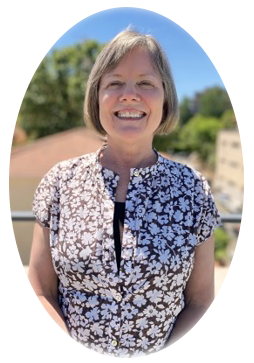
Systemic Functional Linguistics (SFL) and English Language Teaching (ELT) have long held an ambivalent connection, both in practice and in theory. Delving into the roots of ELT and SFL takes us back to related developments across these endeavours in early twentieth century British linguistics. Firth’s work as a linguist and language teacher at the School for Oriental and African Studies was connected to the world of promoting the teaching/learning of English in colonial contexts, yet Firth was also an avid learner of other languages as well as a strong supporter of their teaching/learning in Great Britain. Moving to the middle of the twentieth century, Halliday, MacIntosh & Strevens’ The Linguistic Sciences and Language Teaching (1964) was taken “as a kind of applied linguistics manifesto” (Widdowson, 2009: 194), as it was viewed as fanning the communicative bent to an ELT industry that was about to dominate the language teaching scene around the world, an industry which has been accused of promoting linguistic imperialism (Phillipson, 1992). While the connection between early SFL work and this industry is tenuous at best, SFL approaches to pedagogy have also been accused of “being naive in their proclivity to reproduce, rather than challenge, hegemonic discourses” (Gardner, 2017: 484, based on Luke, 1996), while teaching them to those who are less privileged, thereby imposing a linguistic/cultural dominant discourse. A major question which is explored in this session is whether SFL and ELT pedagogical approaches promote power or empowerment. That is, to what extent do they promote the learning of ways of meaning that are connected to cultures of dominance, on the one hand, or allow participants to become independent and responsible agents of their own lives and meaning-making, on the other? Some conclusions are drawn as to how SFL and ELT can work together to promote empowerment.
Christian M.I.M. Matthiessen is Professor at Complutense University, Distinguished Professor, School of Foreign Languages, Hunan University, and Distinguished Professor, Department of Linguistics, University of International Business and Economics. He has degrees in linguistics from Lund University (BA), where he also studied English, Arabic, and philosophy, and in linguistics from UCLA (MA, PhD), and has previously held positions at USC/Information Sciences Institute, Sydney University, Macquarie University, and the Hong Kong Polytechnic University.
With researchers around the world, he is working on health communication, aspects of educational linguistics, language description, registerial cartography, multilingual studies, language arts, the language of space, and the development of Systemic Functional Linguistic theory.
Matthiessen has authored and co-authored over 10 books and 150 book chapters and journal articles.
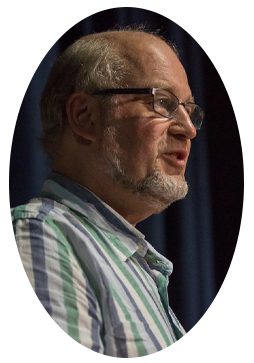
Among the various strands of research and application that collectively constitute systemic functional activities, one of the earliest a “founding member” is language description, and, based on comprehensive descriptions of various languages, also language comparison and typology (e.g. Halliday, 1959/60). Comprehensive language descriptions of particular languages have, of course, also served as the basis for other linguistic activities, including text (discourse) analysis and the many applications supported by text analysis in different institutional settings, e.g. education, healthcare, law, and healthcare. In fact, comprehensive descriptions are a fundamental feature of “appliable linguistics” – linguistics with the power to be applied in a wide range of institutional settings (e.g. Halliday, 2002, 2008; Matthiessen, 2012, 2014; Matthiessen & Yousefi, 2022).
However, while the value of comprehensive descriptions has been widely recognized in the systemic functional community, and also (perhaps to a lesser extent, of comparison and typology based on comprehensive descriptions), the development of descriptions of various languages, in their central roles in communities around the world, has remained a fairly narrow strand within SFL, although clearly an expanding one (e.g. Teruya & Matthiessen, 2015; Mwinlaaru & Xuan, 2016; Kashyap, 2019; Martin et al., in press).
There are various reasons for the narrowness of this strands, including (1) the huge effort involved in terms of specialist technical training and of undertaking research and also (2) the narrow range of academic positions available for systemic functional linguists dedicated to the description of various languages (where they usually must compete with candidates from the descriptivist “mainstream”); but the need for There are various reasons for the narrowness of this strands, including (1) the huge effort involved in terms of specialist technical training and of undertaking research and also (2) the narrow range of academic positions available for systemic functional linguists dedicated to the description of various languages (where they usually must compete with candidates from the descriptivist “mainstream”); but the need for appliable, comprehensive descriptions continues to grow significantly (cf. the growth of the awareness of “vanishing voices” and “dying words” outside SFL, e.g. Nettle & Romaine, 2000; Harrison, 2007; Evans, 2010-important contributions, but ones where the emphasis of loss tends to be on ideational resources, without highlighting interpersonal and textual loss). This is certainly the kind of mission undertaken by members of the SFL community (hopefully a mission possible rather than impossible, since where there is a will, there is a way): community-based need, with accounts developed not only for linguistics but also as resources for communities e.g. in the area of education.
In this talk, I will present the metalinguistic potential for the development of comprehensive descriptions of particular languages empowered by the holistic theory of (modern) language provided by SFL, with modern language in contrast with archaic language, and by a further step – protolanguage; modern language as it must have emerged as part of the “modern package” around 150 to 250 K years ago: AMHs (Anatomically Modern Humans – Homo sapiens sapiens) and LMHS (Linguistically Modern Humans), as sketched in Matthiessen (2004). I will illuminate the role of the holistic theory of (modern) language in the development of comprehensive descriptions of particular languages, and then, by additional steps, in the development of comparisons of (typically small numbers of) languages and the generalised comparison of (necessarily large, representative samples of) languages.
I will highlight the importance of the theoretical-methodological principle of trinocular vision (“from below”, “from roundabout” and “from above”) due to Halliday (e.g. Halliday, 1978; Halliday & Matthiessen, 2014). One important example to be discussed is the clause grammar of MSA (Modern Standard Arabic). When viewed only “from below” (what we might interpret as explicate order”, in Bohm’s, 1979, sense), grammarians have foregrounded a distinction between “verbal clauses” and “nominal clauses”. Interestingly, there are two different views “from below”: Arab grammarians made the distinction based on the class of group introducing the clause, either verbal (“VSO”) or nominal (“S[V]O”); and “Western” grammarians based the distinction on the presence of a verbal group (as Process; “verbal” clauses) or absence (“nominal” clause). But both accounts are misguided, being focussed only on the view “from below”, and while they pay attention to syntagmatic patterns, they background paradigmatic ones (e.g. the presence of a Process in ‘relational’ clauses having to do with the intersection of terms in the systems of polarity and aspect). When viewed “from above” (semantics, and by another stratal step, context) and, importantly, “from roundabout” (the paradigmatic, or systemic, view – “implicate order”), the distinction between “nominal” and “verbal” clauses evaporates as merely a reflection of the narrow view “from below”. And the same applies to many other languages where comparable “superficial” distinctions have been posited because of the foregrounding of the view “from below”.
Halliday’s principle if trinocular vision can be applied to all the semiotic dimensions of the architecture of language in context, both global and local ones. It enables us to interpret typological generalizations, such as those offered by WALS; and it turns out that the view adopted is typically “from below” – so systemic functional linguists can complement this view “from above” and “from roundabout”. This line of exploration can lead to many crucial and exciting developments, such as the helical return to “contrastive analysis” in the service of L2 education, but now greatly empowered by SFL (in contrast with the US American structuralist linguistics available to Lado, 1957).
Dr. Isaac N. Mwinlaaru is currently a Lecturer in the Department of English of the University of Cape Coast, Ghana. He has previously served as a Visiting Lecturer and a Research Associate at The Hong Kong Polytechnic University, where he completed his PhD degree in the Language Sciences. His award-winning thesis is the first comprehensive discourse-based description of the grammar of Dagaare (the Lobr dialect). His research interests include systemic functional theory, functional grammar, language typology, and grammaticalization. Since 2012, he has presented twenty-two papers at both local and international conferences in nine countries across Africa, Asia and Europe. He has published in internationally recognised journals, notably Corpora, Functions of Language, Ibérica, Journal of Pragmatics, Language Sciences, Research in African Literatures, Sociolinguistic Studies and WORD. He has recently contributed to The Routledge Handbook of African Linguistics (2018) – with Christian M.I.M. Matthiessen and Ernest Akerejola. His current project is on the discourse functions of deixis in African languages.
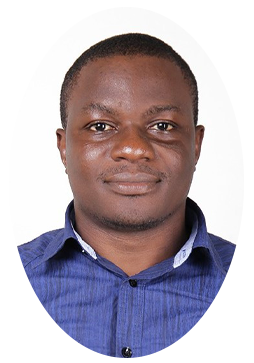
The objective of this study is to argue for the need to use the notion of ‘appliable linguistics’ (see e.g., Halliday, 2008, 2015; Matthiessen, 2012) in decolonizing and empowering linguistic research on African languages. The field of African linguistics emerged from the work of European explorers, colonial administrators, missionaries, and other travellers to Africa in the early sixteenth century (Pugach, 2018). In the nineteenth century, significant contributions to African language studies by German linguists and missionaries, such as Carl Meinhof, Johann G. Christaller, D. H. Westermann, and Johannes Zimmermann established the study of African languages as a flourishing field of study. The purpose of this early research was to spread the Christian message through indigenous languages and to facilitate and support the processes of colonisation. Theoretical underpinnings in some of these projects were racist and imperialist, supporting claims of disparity in the cognitive abilities of Africans and Europeans. Africans involved in linguistic research were usually relegated to ancillary roles and “were not considered the primary authors of the Bible translations, grammars and dictionaries that were produced” (Pugach, 2018: 16). Since the mid-20th century, following the work of Joseph Greenberg, African linguistics have made tremendous contribution to linguistic theory and empirical work, notably in the areas of historical linguistics, including grammaticalisation, and language typology (see Dimmendaal, 2018, for a review). While acknowledging the relevance of the volume of work in these areas to our understanding of human language, the present study argues that work on African languages, including research by Africans themselves, is still driven by questions and goals from the West and are focused on exotic patterns from Indo-European perspectives, giving little regard to the utility of descriptive work to internal problems of the African society. The study also shows that the over-reliance on elicited data and native speaker intuitions in the descriptive literature on African languages often produces parodies of Indo-European grammars (see Ameka, 2018, and Connell, 2018, for reviews on fieldwork in the African context). The present study proposes a complementary approach to the study of African languages whose objective will be to provide descriptions to tackle “current problems of social and political life” in Africa, including mother tongue education and discourse analysis for various purposes (Halliday, 2015: p. 95). The discussion will focus on four parameters of systemic functional linguistics that are necessary in supporting this research agenda: (1) the Firthian “preoccupation with a theory as a mode of action” (Halliday, 2015: 97); (2) the primacy given to the paradigmatic organization of language (3) the use of naturally occurring data to balance the current over reliance on elicited data and native speaker intuitions; (4) the holistic and extravagant approach to description. The discussion will also be related to the implications of the ongoing advocacy in the field of World Englishes for a systematic description and codification of non-native varieties of English in Africa for pedagogical purposes. The study contributes to decolonial research by focusing on a neglected area of study.
JR Martin is Professor of Linguistics at the University of Sydney. His research interests include systemic theory, functional grammar, discourse semantics, register, genre, multimodality, and positive discourse analysis (PDA), focusing on English, Tagalog and Korean- with special reference to the transdisciplinary fields of clinical linguistics, educational linguistics, forensic linguistics, and social semiotics. Professor Martin was elected a fellow of the Australian Academy of the Humanities in 1998 and was Head of its Linguistics Section from 2010-2012; he was awarded a Centenary Medal for his services to Linguistics and Philology in 2003.
In April 2014, Shanghai Jiao Tong University opened its Martin Centre for Appliable Linguistics, appointing Professor Martin as Director.
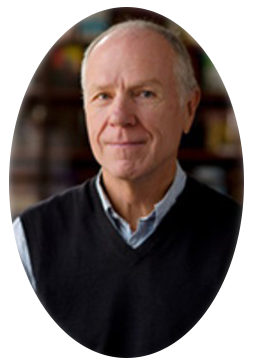
Abstract: In this presentation I will review issues arising from the description of attitudinal relations proposed in Martin & White’s The Language of Evaluation (2005). This will include issues having to do with stratification (developing discourse semantic systems), instantiation (multiple coding, the inscribe/invoke continuum, technicalisation and iconisation) and individuation (bonds and bondicons). In doing so I will stress the importance of interpreting APPRAISAL systems in relation to the Systemic Functional Linguistics theory that underpins the description and the challenge of dealing with applications and critiques of the framework which in effect disembody the description from this theoretical ground.
Dr. Lise Fontaine is a Reader in the Centre for Language and Communication Research at Cardiff University. She lectures mainly on functional grammar, lexical semantics, and corpus linguistics. Her research interests include functional grammar theory and, more specifically, the study of referring expressions as realised in the nominal group. In addition to journal articles and book chapters, she is the author of Analyzing English Grammar: A systemic- functional introduction (CUP) and co-editor of the following six volumes Systemic Functional Linguistics: Exploring Choice (CUP); Choice in Language: Applications in Text Analysis (Equinox); Perspectives from Systemic Functional Linguistics: Appliable Theory of Language (Routledge); The Cambridge Handbook of Systemic Functional Linguistics (CUP); The Oxford Companion to the English Language (OUP) and Approaches to Systemic Functional Grammar: Convergence and Divergence (Equinox).

“Meaning is brought about by language; and the energy by which this is achieved, the source of its semogenic power, is grammar.” (Halliday 2005 p. 63)
Within the framework of systemic functional linguistics (SFL), language is modelled as a semiotic system. At the heart of this language system is the lexicogrammar, which, for Halliday (2005 p 74), is the powerhouse of language. Despite its central role, however, there is generally a feeling that this core area is relatively understudied, at least for English, which has historically provided the foundation of the theory. While the expansive development and use of SFL theory for transdisciplinary purposes (Wegener et al, in preparation) is very welcome and indeed promising, the source of grammatical energy, the powerhouse itself, should also be the focus of our attention – not instead of, but in addition to, the wealth of work being done on the understanding of its effects on people and society at large. Accepting that language is a semiotic system, implies that we should also accept that while it is “made of meaning”, it has “to materialise – to become matter” (Halliday 2005 p 68). It follows that if the semiotic system is entirely semantic, the materialised form (matter) of language must be related to, but outside of (or at some boundary of) the semiotic system. We might agree that the materialised form is embedded in context, but the language system as a whole, i.e. its theoretical (abstract) representation, cannot be. For this reason, the distinction between instantiation and actualisation becomes significant, where “actualisation is defined as the relation between the actual and either the potential or the typical” (Wegener 2011 p 98). In this talk, I use the semantic profile of watch, as an atypical verb of visual perception, to demonstrate ways in which, at the lexical level, we can explore the relationship between instantiation and actualisation. I will also consider its semantic features in relation to several related verbs (see, stare, look, and listen). The unique profile of watch makes it a challenging case study because it appears to defy categorisation and as such, provides a useful example to demonstrate the significance of the SFL concept of ‘meaning potential’ in a meaning-driven account of lexical semantics (cf. Allwood 2003, Fontaine 2017). By shift our focus to the lexical side of the lexicogrammar stratum, we may shed more light on the theoretical powerhouse, ideally resulting in a better understanding of its grammatical energy.
Miriam Taverniers is associate professor of functional approaches to English linguistics at Ghent University. Her research into the nature of grammatical metaphor in Systemic Functional Linguistics (PhD 2002) led to a fascination with theoretical concepts, especially the design and understanding of dimensions and categories in functional linguistic frameworks with a focus on SFL (esp. the relation between lexis and grammar; stratification, esp. the syntax-semantics interface and the role of context; the relation between instance, norm/register and system; the concept of ‘construction’ and its relation to paradigmatic modelling). She also works on descriptive and applied topics, with a special dedication to what these perspectives can contribute to our understanding of the theoretical issues mentioned above.
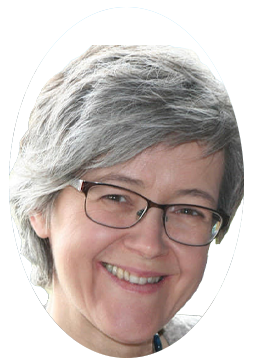
If a language’s lexicogrammar is its “powerhouse” (Halliday 2005: 74), metaphor, as the process of “reconstruing the patterns of realization in language – particularly at the interface between the grammar and the semantics” (Halliday 2003: 21), or “the constant decoupling and recoupling between the semantics and the lexicogrammar” (Halliday 2003 [1997]: 253) can be seen as the super process that ongoingly provides a language’s powerhouse with energy.
In this talk I will focus on (i) grammatical metaphor, (ii) its power, and (iii) the responsibility that comes with this power.
(i) In a first part, I will explore the nature of grammatical metaphor as an inherent feature of languages being dynamic open systems, with multiple levels of encoding (stratification) that are related through metaredundancy (Taverniers 2017, 2019). In this characterization, I will define grammatical metaphor against other types of ‘shifts’ or “using existing resources more than once” (Martin & Matthiessen 1991: 350), such as transcategorization, conversion, or rankshift. What marks off grammatical metaphor as a powerful process against more ‘mundane’ types of shift in language? This question is particularly relevant, and paves the way for Part 2 of this paper, in that grammatical metaphor is typical of knowledge-based and technocratic discourse, especially including academic genres, while transcategorization, for instance, is a general feature of languages (Halliday & Matthiessen 1999: 242), including languages without elaborate academic repertoires and also emergent creoles (Blank 2001).
(ii) Part 2 zooms in on the power of grammatical metaphor. How did it emerge as a corollary of language being a dynamic open system, and why did it stick around and become so important in highly valued discourse genres? More generally, how exactly does metaphor fuel a language’s semogenic potential? In this part I will flesh out the power of grammatical metaphor across the three metafunctions and at different stratal levels.
(iii) As Halliday (2003 [1997]: 269) puts it, with power comes responsibility. Hence, a focus on the power of grammatical metaphor should also include a perspective on how to responsibly transmit this potency from one generation to another. This calls for a social view on grammatical metaphor, which engages with issues of access to metaphorical meaning-making, and challenges of appropriation and socialization. The main issue addressed in this final part of this paper is: Implications of grammatical metaphor for language pedagogy – or, the question of: How to enhance access to the metafunctional opportunities inherent in grammatical metaphor (as defined in Part 2) in language teaching?
Dr. Wang Zhenhua (Eddie) is a full professor at School of Foreign Languages, Shanghai Jiao Tong University (SJTU), a State Council Expert enjoying special allowance (China). He founded The Martin Centre for Appliable Linguistics and acts as the director of the Centre since its setting-up in 2014. He was conferred the Vice-Chancellor’s Achievement Award from the University of Australia in 2019. He is a vice president of China Association of Functional Linguistics. He is an international advisor of LCT Centre for Knowledge- Building, the University of Sydney.
He is the investigator of a dozen of research projects and published widely. He edited the 8 volumes of Collected Works of JR Martin (2010-2012), On J.R. Martin’s Contribution to Systemic Functional Linguistics (2013, co- editor), Interview with James R. Martin (2015), Discourse as System: A Discourse Semantic Perspective (2019), Study of Legal Language: A Discourse Semantic Perspective (2020), and Chinese Translation of Knowledge and Knower: Towards a Realist Sociology of Education (2021). His research interests are SFL, language and the law, APPRAISAL.
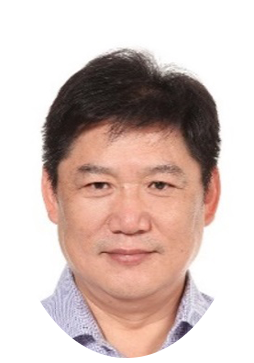
SFL, as an appliable linguistics, is a general theory developed out of studies of social interaction and communication, and applied to the analysis and solution of language and linguistic problems in social practices. This theory is a meaning-driven theory, with the three meta-functions as the tools for analysing three modes of meaning (ideational, interpersonal, and textual). These modes of meaning obtain in the grammatical organization of language in use, and are reflected in the organization of lexicogrammatical (e.g. TRANSITIVITY, MOOD and THEME) and discourse semantic (i.e. NEGOTIATION/APPRAISAL and IDENTIFICATION/PERIODICITY) systems. But
IDEATION/CONNEXION, when we come to think of the terms of concepts such as ‘meaning’, ‘to mean’, and ‘sense’, how do the three modes of meaning match up? We hold that when people communicate, what the speaker/writer intend to realize is the meanings they are trying to convey, and the listener/ reader interprets the meanings the speaker/writer intends to make. In this process, the user plays a key role, and what s/he is meant (‘to mean’), is a hybrid of the linguistic meaning (‘meaning’) and what s/he intends (‘sense’). But the concept of ‘to mean’ and its features are not well elaborated traditionally. This paper focuses on how the genre of the Sydney School helps bring about the appropriate meanings in communication, and in what way these meanings are brought out, and what the features of ‘to mean’ are. Via analysis, we find that the process of ‘to mean’ is adaptable to the context, complex and volatile and the meaning can be incomplete in order to afford dialogue; and ‘to mean’ is negotiated with the addressee both spatially and temporally. All the features of ‘to mean’ are abbreviated as ACUVIN (adaptability, complexity, volatility, incompleteness, and navigation).
SYFLAT is an academic association interested in the field of Systemic Functional Linguistics (SFL), a school of linguistics founded by the British linguist M. A. K. Halliday in 1961, and then developed and applied to many other fields.